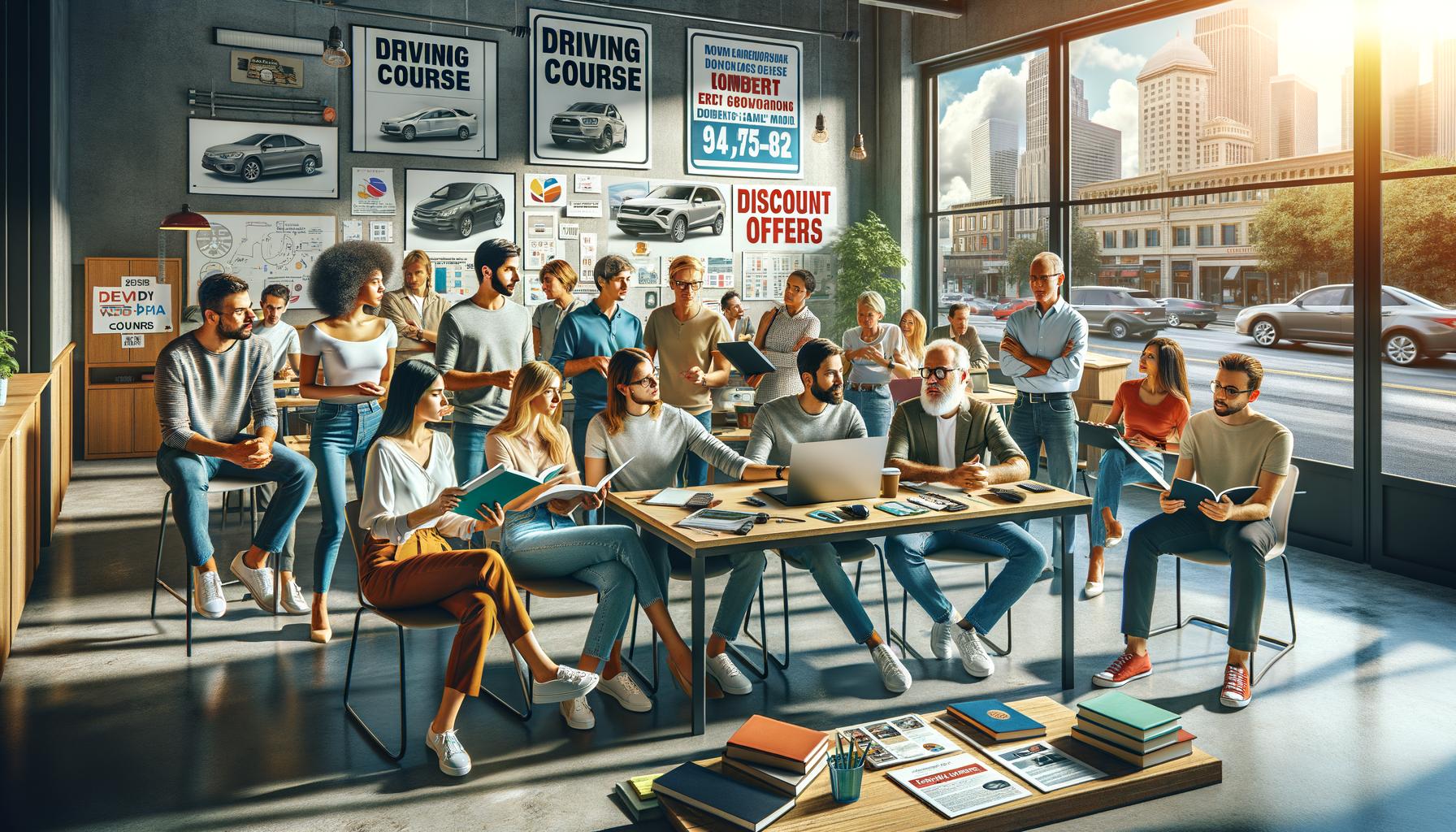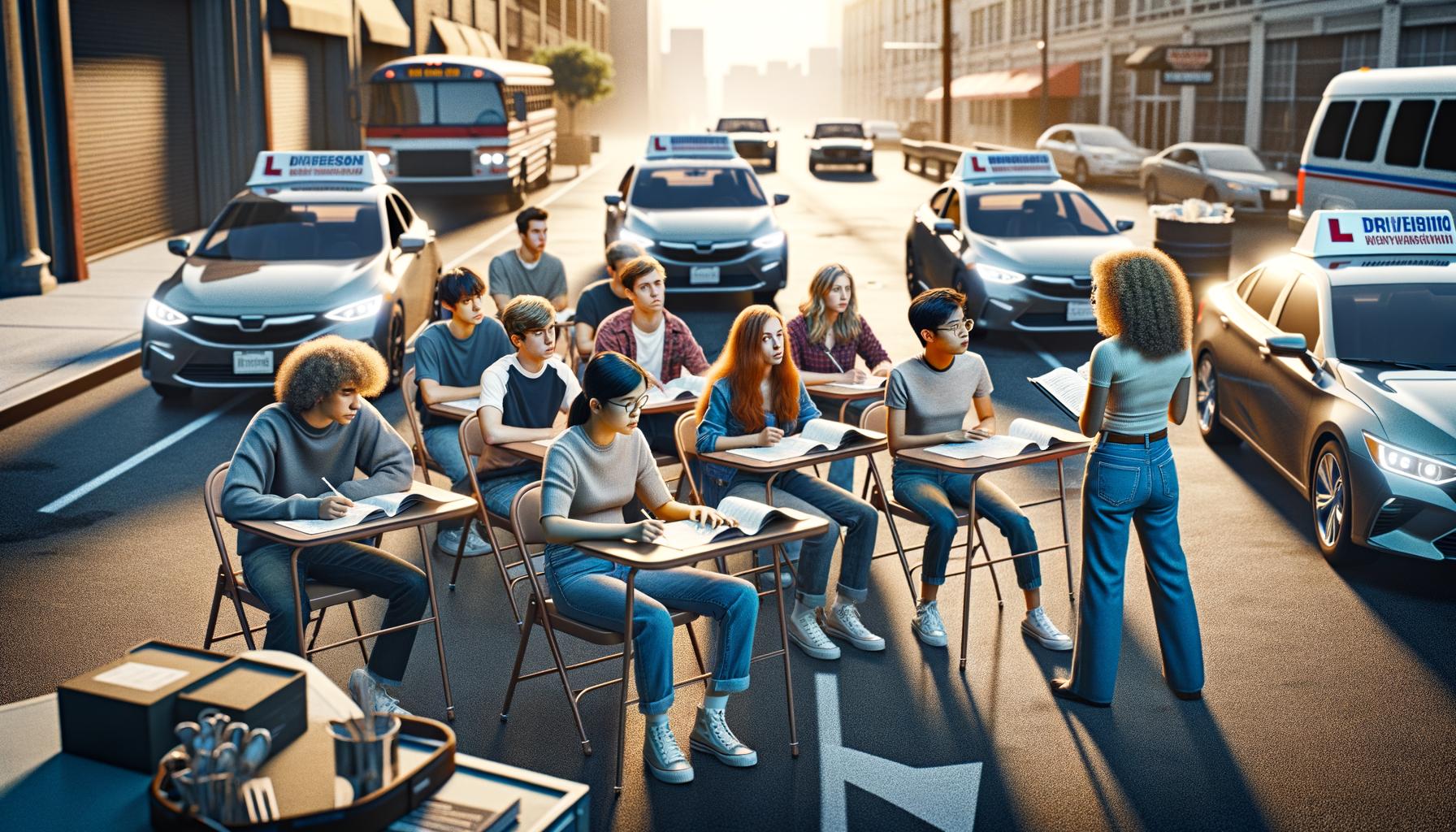How to Learn Driving: Tips for Beginners
Learning to drive is a significant milestone in life, opening up new opportunities and independence. At The Wiser Driver Driving School, we understand the excitement and challenges that come with this journey.
This guide will provide essential tips on how you can learn how to drive, from understanding the basics to mastering crucial skills. Whether you’re a complete beginner or looking to refine your abilities, these insights will help you become a confident and safe driver.
What Are the Driving Basics?
Getting to Know Your Vehicle
Understanding the fundamentals of driving starts with familiarizing yourself with your car’s controls. Spend time in a stationary vehicle to locate and understand the function of each pedal, lever, and button. Focus on the gear shift, turn signals, windshield wipers, and headlights. A National Highway Traffic Safety Administration study on vehicle control familiarity, known as the 100-Car Study, was the first to establish a direct relationship between immediate, pre-event driving inattention and crash and near-crash involvement.
Navigating the Rules of the Road
Learning traffic rules and road signs is essential for new drivers. The Federal Highway Administration reports that misunderstanding road signs contributes to approximately 3% of all crashes. To combat this, use online resources and practice tests to memorize common signs and their meanings. Many state DMVs offer free study guides that prove invaluable in this process.
The Power of Defensive Driving
Defensive driving significantly reduces your risk on the road. The National Safety Council states that defensive driving courses can be an effective solution to reduce risk and keep people safer on the road. This approach involves anticipating potential hazards and adjusting your driving accordingly. Key aspects include:
- Maintaining a safe following distance
- Staying alert to your surroundings
- Always having an escape route planned
Practical Application of Skills
To truly internalize these basics, nothing beats hands-on experience. The Wiser Driver Driving School offers state-required Joshua’s Law classes and personalized driving lessons that combine theoretical knowledge with practical application. Experienced instructors guide you through real-world scenarios, helping you apply what you’ve learned in a safe, controlled environment.
Continuous Improvement
Mastering the basics of driving is an ongoing process. Even after obtaining your license, continue to refine these skills and stay updated on any changes to traffic laws or new safety recommendations. With patience and practice (and the right guidance), you’ll become a skilled and responsible driver.

As you progress in your driving journey, the next step is to prepare for your first driving lesson. This preparation will set the stage for a successful learning experience and help you make the most of your time behind the wheel.
How to Prepare for Your First Driving Lesson
Select a Reputable Driving School
Your choice of driving school will shape your learning experience. Look for schools with high pass rates and positive student reviews. The American Driver and Traffic Safety Education Association recommends schools that offer a mix of classroom and behind-the-wheel instruction. (The Wiser Driver Driving School stands out with its comprehensive programs for drivers of all ages, including state-required Joshua’s Law classes and personalized driving lessons.)
Gather Necessary Documentation
Before your first lesson, collect all required documents. This typically includes your learner’s permit, proof of identity, and any necessary medical certificates. The National Highway Traffic Safety Administration reports that proper documentation ensures a smooth start to your driving education and prevents delays in obtaining your license.
Dress Appropriately for Driving
Your clothing choices can impact your driving experience. Wear shoes that allow you to feel the pedals clearly – avoid high heels, flip-flops, or bulky boots. Choose loose, comfortable clothing that doesn’t restrict movement. A study by the Automobile Association found that inappropriate footwear contributes to a significant number of accidents among new drivers.
Prepare Your Mind
Approach your first lesson with a positive attitude. The National Safety Council emphasizes the importance of being well-rested and alert for driving. Schedule your lesson at a time when you’re likely to be most focused and receptive to learning (avoid times after a long day at work or school).
Familiarize Yourself with Basic Controls
Spend time in a stationary car to acquaint yourself with the basic controls before your first lesson. This can reduce anxiety and allow you to focus more on driving techniques during the lesson. The Insurance Institute for Highway Safety notes that familiarity with vehicle controls can significantly reduce the risk of accidents for new drivers.

As you complete these preparations, you’ll set a strong foundation for your driving journey. The next step is to focus on the essential driving skills that every beginner should master.
Mastering Essential Driving Skills
Steer with Precision
Proper steering technique forms the foundation of safe driving. The National Highway Traffic Safety Administration (NHTSA) recommends the “push-pull” method for optimal control. This involves pushing the wheel up with one hand while pulling down with the other, maintaining a firm grip at the 9 and 3 o’clock positions. Practice this technique in a safe, open area to build muscle memory and improve your ability to navigate turns smoothly.
Accelerate and Brake Smoothly
Mastering smooth acceleration and braking enhances passenger comfort, improves fuel efficiency, and reduces vehicle wear. The U.S. Department of Energy reports that aggressive driving can lower gas mileage by 15% to 30% at highway speeds. When accelerating, apply gentle, steady pressure to the gas pedal. For braking, start to slow down early and gradually increase pressure on the brake pedal, coming to a smooth stop.
Perfect Lane Changes and Merges
Changing lanes and merging safely require practice and spatial awareness. The Insurance Institute for Highway Safety (IIHS) states that improper lane changes account for a significant portion of accidents on highways. Always use your turn signals, check your mirrors, and look over your shoulder to check blind spots before making a move. Practice judging the speed and distance of other vehicles to find safe gaps in traffic.
Develop Spatial Awareness
Spatial awareness is key to safe driving. It involves understanding your vehicle’s dimensions and its position relative to other objects on the road. Try to estimate distances between your car and others (both in front and behind). Practice parking in various spaces to improve your judgment of the car’s size and position.
Master Defensive Driving Techniques
Defensive driving significantly reduces your risk on the road. This approach involves anticipating potential hazards and adjusting your driving accordingly. Key aspects include maintaining a safe following distance (use the “three-second rule”), staying alert to your surroundings, and always having an escape route planned. Drivers of all ages and experience levels report improved driving habits and reduced accident rates after completing defensive driving courses. Many driving schools (including The Wiser Driver Driving School) offer specialized defensive driving courses to help you master driving skills.

Final Thoughts
Learning to drive requires dedication, patience, and practice. You must master vehicle control, understand traffic rules, and develop essential skills like smooth acceleration and braking. Professional instruction can accelerate your progress and ensure you develop safe driving habits from the start. The Wiser Driver Driving School offers comprehensive programs for drivers of all ages.

Patience is key when you learn how to drive. It’s normal to feel nervous or make mistakes, but your confidence will grow with time and practice. Focus on mastering one skill at a time, and don’t rush the process. Regular practice in various driving conditions will help solidify your abilities and prepare you for real-world scenarios.
Learning is an ongoing process. Stay curious, remain open to feedback, and always prioritize safety on the road. With the right mindset and proper guidance, you’ll become a confident, responsible driver. Investing in professional driving education can make a significant difference in your development as a driver (whether you’re just starting out or looking to refine your skills).
















































